This article is all about how you can use the power of vision board goal setting to achieve your goals. Whether you’ve heard about vision boards and never made one or want to upgrade your existing vision board game, this article is for you. We’re breaking down vision setting for any stage of life and translating your vision into reality with actionable steps to achieve your goals. By the end of this article, you’ll have completed the first critical step to transform your vision into reality. We’re harnessing the power of visualization.
The practice of creating a vision for oneself is a critical exercise of owning your power and achieving your goals. Through engaging in a routine practice of vision setting, you reinforce your beliefs in abundance, accept responsibility for your cumulative actions toward your destiny, acknowledge your role in creating the life you want, and can hold yourself accountable for the alignment of your vision and actions. If you need help with aligning your beliefs with your intentions and practices, you can read a previous article I wrote, which includes an exercise for you to jumpstart your transition from wishful thinking to wishful doing.
What Is Vision Board Goal Setting and How Does It Work?
Because we’re focusing on vision board goal setting, we’ll focus on a pragmatic approach to vision boarding. However, it’s worthwhile to review what a vision board is and how they typically work. In essence, a vision board serves as a reflection of your goals or dreams yet to be realized.
Most often, individuals will focus their vision board on a long-term destination point, potentially decades out. As an example, someone in their 20s might use a vision board to reflect their intended achievements up through retirement. Hence, images included on their vision board might represent living in their beach home surrounded by grand children after a life well-lived following a rewarding career. In other words, the focus of their vision board is, “What does my future look like 30 years from now?”
While a vision board can be used for manifesting dreams and goals realized in a distant future, they are equally, if not more effective, in the short-term. For the purpose of vision board goal setting, we’ll focus on creating a vision board for the short-term—no further than 12 months out. By focusing on the short-term, we can develop tangible goals and benchmarks to make progress toward specific larger goals. This is a more strategic and pragmatic approach that provides reassurance throughout the year that you’re on track to meet your goals.
Getting Started: Materials and Mindset
To get started with vision board goal setting you’ll need the following:
- Materials to create a vision board
- Decide on which approach you’ll use to assemble your vision board
- Identify SMART goals
- Adopt a growth-oriented and open mindset
Materials To Create A Vision Board
The sky is the limit when it comes to materials for creating your vision board. While many like to produce a physical vision board on poster board, it’s not a practical size for keeping on your person and reflecting on it daily. However, a poster board sized vision board is great for hanging up in a dedicated space that you work out of daily or spend a lot of time in. The key is that you want to revisit your vision board daily. To that effect, I recommend creating a smaller version in your planner or a journal that you use daily.
Physical or Digital Format
If you use a physical or digital planner or journal, this is an ideal space to include your vision board for daily reflection. However, if you don’t use a planner, you can still create a smaller vision board in physical or digital format. You can create a digital version with any number of apps, computer programs or websites like Canva or even Microsoft PowerPoint. There are certainly many other digital options and you can explore some of the best options here. This article will focus on physical materials, but the concepts apply to physical or digital formats.
Physical Materials and Supplies
You are only limited by your own creativity. If you need some ideas of what supplies to use, some recommendations follow. However, you don’t need to use all of the materials presented in the list below:
- A piece of paper (legal or letter) should you choose not to use a physical planner or poster board
- Scissors (if you’re crafty, you can whip out a box cutter, guillotine, etc)
- Magazines (you can cut out images or parts of text)
- Personal photos (print and cut out)
- Markers, colored pencils, or pens
- Stickers (letters, images)
- Glue stick

Two Approaches for Vision Board Goal Setting
To begin, choose which approach you prefer for vision board goal setting. This will be done in advance of assembling your vision board. Below are two options I recommend. Based on your preferences, choose the option that feels right for you:
Option 1: Gather Your Images First
Intuitively cut out images, words, sentences, and quotes that resonate with you. Anything goes. Simply find material that you’d like to incorporate into your vision board. The benefit of this approach is that your subconscious guides which areas of your life to focus on. In other words, your current energy will demand that you focus on areas that perhaps you had not planned on.
Hence, you might not be aware of particular needs you have. It’s also possible that you had not thought to prioritize particular areas of your life at this point in time. This approach is a much less rigid than the second approach. With this approach you let your inner most desires manifest themselves. Then, you structure your goals around what surfaces through your subconscious thoughts and needs.
After collecting all of your images, words and so forth, categorize them into themes. Do you notice that you have categories of images related to career, health, relationships, and so forth? Maybe you notice that there is only one category. If that’s the case, try breaking down your one category into several subcategories.
After you identify your categories or subcategories, write down your thoughts and any patterns you notice. After you’ve engaged in some deep thought around the images and materials you’ve selected, you can begin to develop some SMART goals. I’ll talk more about SMART goals shortly.
Option 2: Identify Specific Goals First
Before you collect any images or material for your vision board, take some time to reflect on your life. You might already have some specific goals in mind. You can quickly write those down. In addition, you might want to assess important areas of your life where you’d like to see improvement. You can use this holistic assessment and action plan to help you identify, prioritize, and create goals to focus on. The key is that you’ll achieve the best results with SMART goals. This means that your goals should be Specific, Measurable, Achievable, Relevant, and Time bound.
As an example, you might have written down a goal of getting into shape. However, this is a vague goal. While admirable, it’s important to define what getting into share means to you. You might determine that getting into shape looks like improved stamina, a lower BMI, increased strength, or something else altogether. This is where you’ll benefit from creating SMART goals.
Identify SMART Goals
After you’ve decided on which approach you’ll take, it’s time to create some goals. These can be short-term or long-term goals. Regardless of whether you choose short-term or long-term goals, your best results will come from breaking down your goals into actionable steps with SMART goals.
In the example of getting into shape from Option 2 above, you would create SMART goals that align with your ideas about what getting into shape looks like for you. In this case, you might identify a goal of committing to 20 minutes of exercise three days a week for one year, because you want a less sedentary lifestyle. Then, you could think about what those physical activities will be. Therefore, you might commit to three different activities per week, such as walking, yoga, and strength training. Next, you will find images that specifically reflect your journey of getting into shape based on your SMART goals.

Whether you identify your SMART goals before or after collecting images for your vision board, SMART goals are a critical component of vision board goal setting. Crafting solid SMART goals demands your time and attention because these are the actionable steps you will take to get results toward your dreams and larger goals. While you can come up with as many goals as you like, I recommend that you stick to what feels reasonable and achievable for you.
Let’s breakdown SMART goals:
Specific. The more specific your goal is the better. Be as specific as you can be when breaking down a larger goal. Instead of saying, “I will drink more water” you can say, “I will drink a minimum of 64 oz. of water everyday.
Measurable. In the example of drinking a minimum of 64 oz. of water everyday, you can easily measure your progress. You can do this by monitoring whether you are drinking water every day or not. Further, you can monitor the volume of water you are drinking every day. Both of these indicators inform you as to whether or not you are on track toward meeting your goal.
Achievable. It’s important that your goal be realistic. Can you reasonably expect to drink water everyday? Most would agree that drinking water every day, while it requires commitment, is not only reasonable, but it should be done for your health, even if not an intentional SMART goal. While the volume of water might be a stretch for you, one way to make this goal easier to track and measure would be to purchase and carry a 64 oz. water bottle with you everyday. That way you don’t need to meticulously track your water intake. You can just focus on drinking the entire water bottle every day, which is pretty reasonable.
Relevant. When you craft your SMART goal, it’s important that your actionable step be relevant to your overarching goal. In the example of drinking more water, it’s clear that increasing your water intake by volume and frequency is relevant. However, as it relates to the example above of getting into shape, you might revise your over arching goal from getting into shape to getting healthy instead. Or you might accept increasing your water intake as a key component of your routine to get into shape. One reason might be because you know that you’ll be engaged in heavy cardio activities or any activity where you’ll become dehydrated.
Time bound. It’s also important that you have a timeframe with which you are committed to completing your goal. In our example of drinking 64 oz of water everyday, the goal is daily. However, it is also part of your 12-month goal to either drink more water or get into shape during the next 12 months. Either way, you have an interval that you will use to measure your progress toward your goal.
To learn more about SMART goals and for additional support with creating your SMART goals for your vision board goal setting, click here.
Adopt a Growth Oriented and Open Mindset
The foundation of vision board goal setting is your beliefs and mindset. To illustrate this, you can watch this short video by Carol Dweck on The Power of Believing That You Can Improve. The mind is powerful and our beliefs are closely tied to our reality. Think about individuals who receive a placebo treatment and experience a beneficial effect. The beneficial effect cannot be attributed to the properties of the placebo itself. Thus, the benefit they experience is due to the patient’s belief in that treatment.
Similarly, when you want to achieve a specific goal and believe that you can, your focus shifts to making that thing happen. You are no longer investing energy in excuses, a limiting belief, or a scarcity mindset. At the heart of vision board goal setting is your growth-oriented disposition and mindset combined with the power of visualization.
The Power of Visualization
Athletes often rely on the power of visualization when they prepare for game day or a competition. There have been several brain studies that reveal that thoughts produce the same mental instructions as action. Further, the results of these studies highlight the strength of the mind-body connection, or put another way, the link between our thoughts and behaviors. If you want to do a deep dive into the many benefits of the power of visualization, beyond achieving your goals, you can read this robustly cited article.
Create and Assemble Your Vision Board
The time has come to apply the power of visualization and growth mindset to your vision board. There are no rules as to how you should execute the imagery you incorporate into your vision board. While I provide instructions and guidance using language for creating a physical vision board, the principles are the same for a digital vision board.
Images
Begin by collecting images from various sources to include graphics, photos from magazines or personal photos. Print personal photos at your local store or on your personal printer. Prior to pasting your images, you can cut or tear your images into different shapes or follow an organic outline of the object in your image. In addition to cutting and pasting items onto your vision board, you can use stickers too.
Words
You can also cut out full sentences, fragments of sentences, or even singular words to form your own sentences or headers. In addition, you can cut out or print favorite inspirational quotes or affirmations. Another option could be to make custom quotes or affirmations by cutting various words or letters of different shapes, sizes and colors. You would then paste them together. Lastly, another option is to skip the cutting and gluing, and write out anything you like with various colored markers, pens or pencils.
Putting It All Together
Assemble your vision board however feels natural to you. Your vision board is a representation of you and your goals. It should not look like anyone else’s vision board. The only guidance I will add here is for individuals who choose Option 2 as their approach to their vision board. If you will select images after developing your SMART goals, you should search for images that are relevant to your goals. However, don’t fret if you’re inspired by an image that isn’t related to a goal. There is room for spontaneity. If you feel inspired by an image that isn’t representative of an established goal, you can create another SMART goal that speaks to that image. If you choose Option 1, take inventory of all your images in your completed vision board. After engaging in the previously mentioned process of reflection, you can create your SMART goals.
Once you’ve finished assembling your vision board and have created your SMART goals, keep them close and refer to them every day to track your progress. You now have a vision board that will work to assist you in achieving your goals. Be sure to create another vision board and set new SMART goals as needed. It can be beneficial to engage in an annual practice of vision board goal setting.
CHECK-IN
- Do you plan to sustain vision board goal setting as a permanent practice?
- Which other ways can you incorporate the power of visualization into your practice of living the life you want?
- What is your biggest hurdle to vision board goal setting?



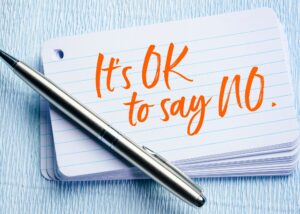









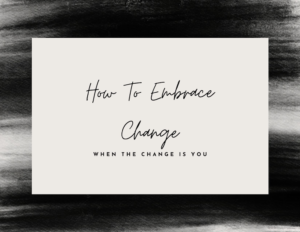

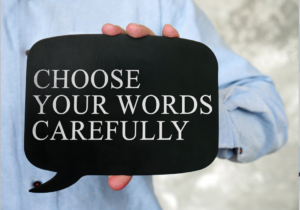
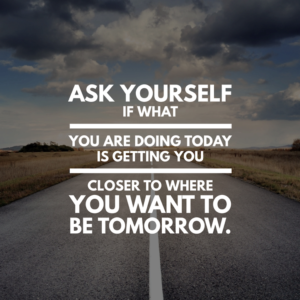







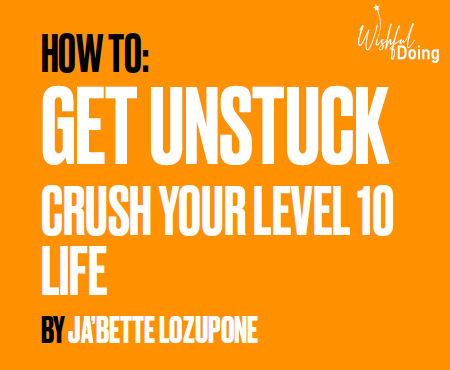


2 thoughts on “The Power of Vision Board Goal Setting”
I LOVE VISION BOARDS!!!!!!! I’ve had some things come true that I have manifested from my vision board. I love it!!
Me too! My goal for this article was to facilitate a strategic method for creating a vision board that increases the likelihood of all of your goals coming to fruition. At the end of the day, you still need a plan to achieve your goals. It’s important to be active, and not passive, about your aspirations. So glad you enjoyed the article!
Comments are closed.